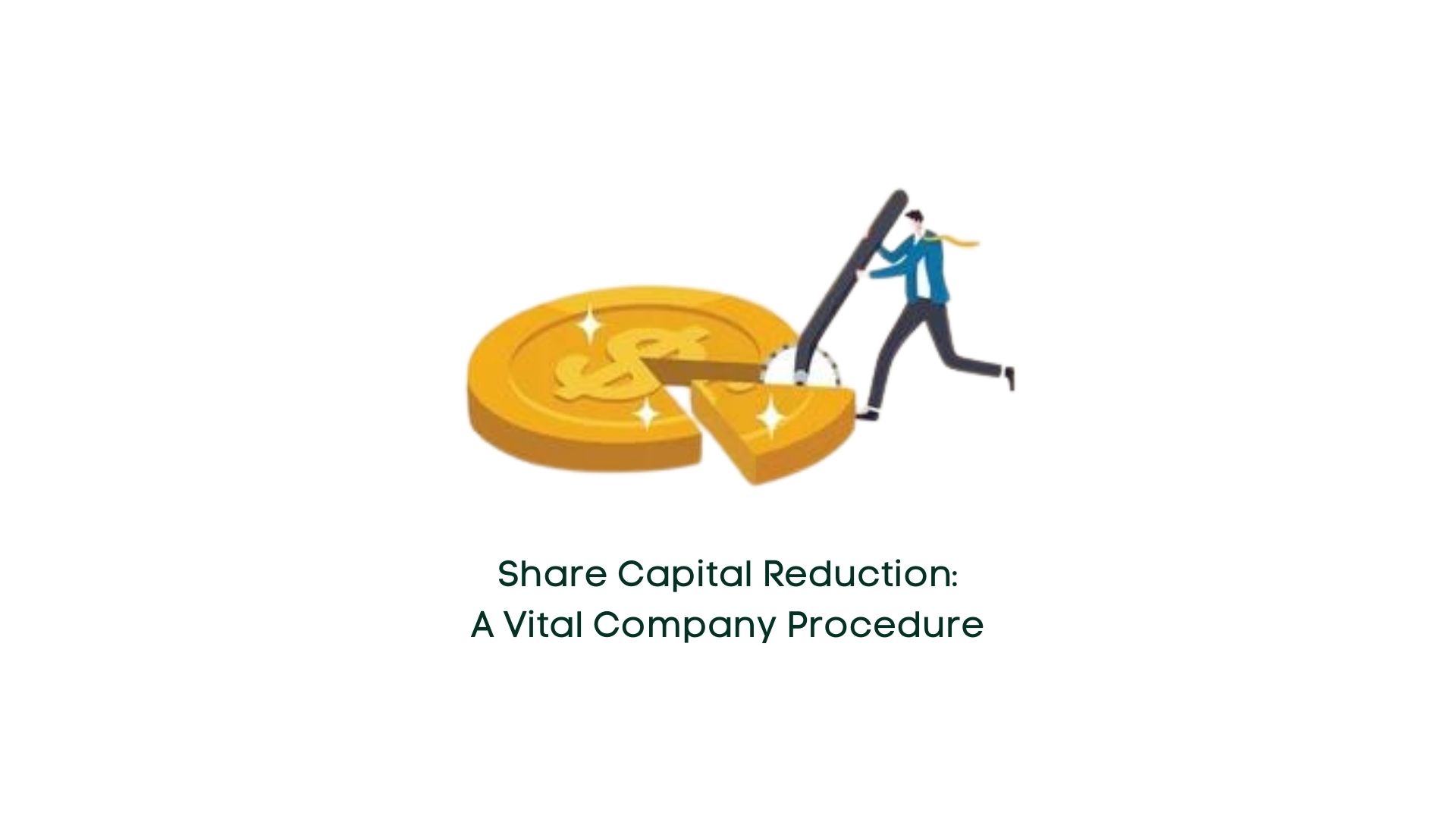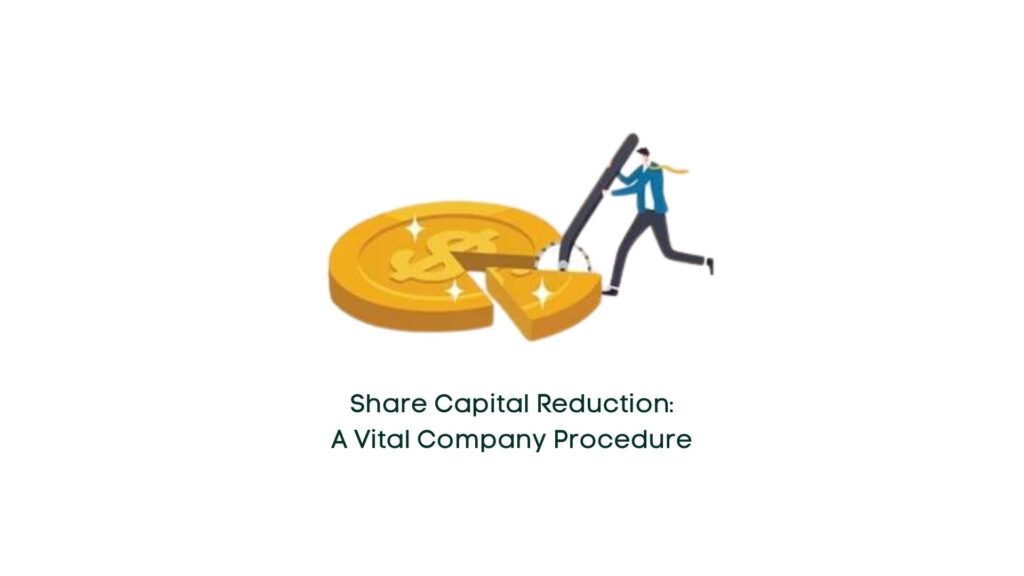
01 Mar Share Capital Reduction: A Vital Company Procedure

Share capital reduction stands as a crucial procedure within the corporate landscape, offering companies the means to adjust their financial structure under specific circumstances. This article delves into the intricacies of share capital reduction, shedding light on its importance, procedural requirements, and the implications it holds for stakeholders.
The Process:
Steps Towards Share Capital Reduction
- Authorization through Special Resolution:
- Companies, whether limited by shares or guarantee, initiate the share capital reduction process through a special resolution. This resolution grants the company authority to undertake various actions, including extinguishing or reducing liabilities on shares, canceling lost or unrepresented share capital, or paying off excess share capital.
- Tribunal Confirmation:
- The company's application for share capital reduction undergoes scrutiny by the Tribunal. The Tribunal notifies relevant authorities and creditors, allowing them a specified period to raise objections or concerns. The Tribunal's role is crucial in ensuring compliance with legal requirements and protecting the interests of all stakeholders.
- Accounting Treatment and Compliance:
- A key consideration in the share capital reduction process is adherence to prescribed accounting standards. The proposed accounting treatment must align with regulatory frameworks, with certification by the company's auditor verifying compliance. This ensures transparency and accountability throughout the process.
Ensuring Transparency:
Publication and Documentation
- Publication of Tribunal Confirmation Order:
- Upon the Tribunal's confirmation of share capital reduction, the company is mandated to publish the confirmation order. This serves to inform stakeholders, including shareholders and creditors, about the revised financial structure of the company, promoting transparency and accountability.
- Registrar Submission and Certification:
- Following Tribunal confirmation, the company submits necessary documentation to the Registrar within a specified timeframe. This documentation includes a certified copy of the Tribunal's order and a minute approved by the Tribunal, detailing the revised share capital structure. Upon verification, the Registrar issues a certificate acknowledging the share capital reduction.
Protecting Stakeholder Interests:
Safeguards and Liabilities
- Protection for Shareholders:
- Shareholders, both past and present, are shielded from excessive liabilities arising from share capital reduction. Their liabilities are limited to the difference between the paid-up amounts and the reduced share value, ensuring equitable treatment and mitigating financial risks.
- Creditor Safeguards and Accountability:
- Share capital reduction procedures include safeguards to protect creditors' interests. Any attempts to conceal creditor information or misrepresent debts are met with legal repercussions, emphasizing the importance of transparency and accountability throughout the process.
Conclusion:
Embracing Compliance for Financial Adaptation
In conclusion, share capital reduction serves as a vital mechanism for companies to adapt to evolving financial landscapes. By adhering to regulatory requirements, prioritizing stakeholder protection, and maintaining transparency, companies can navigate this process effectively, safeguarding their financial integrity and fostering trust among stakeholders.


No Comments